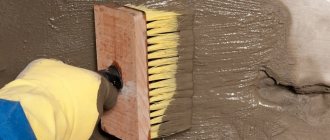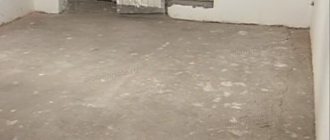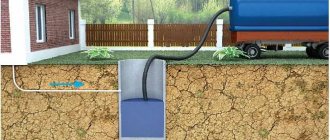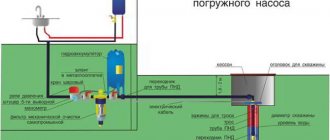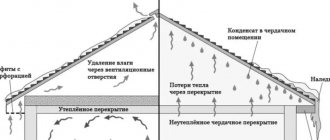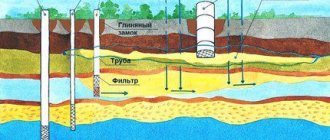Living in a private house requires the presence of an autonomous sewer system. It consists of internal wiring, external piping and a storage tank (or VOC). For residents of holiday villages or houses of temporary (seasonal) residence, a cesspool remains relevant as the best way to collect and partially recycle waste.
We will tell independent home craftsmen how to construct a cesspool from a barrel. This is an extremely simple option that requires a minimum of funds in construction. Taking into account our recommendations, you can easily install an autonomous sewer system with a cesspool.
Features of arranging a cesspool from a barrel
A modern comfortable house requires an autonomous sewerage system. Thanks to it, residents can use all the amenities without going outside, which is especially important in winter or in bad weather. However, to install such a system, you need to create a cesspool or septic tank. This is a special underground reservoir into which all sewage flows - from the sink, shower, bathtub and toilet.
In most cases, private houses are equipped with large waste storage tanks - with a capacity of several cubic meters. However, if the number of one-time or daily waste discharges is small and the geological conditions of the area ensure rapid absorption of the liquid fraction (drainage), then to equip a drainage pit you can get by with a small container - a barrel for a couple of hundred liters.
If there is a large volume of wastewater, you need to install several barrels connected in series Source stroy-podskazka.ru
The construction of a country toilet with a sewage system based on a receiver from a 200 liter barrel meets the following practical conditions:
- A single-chamber device - one barrel acting as a primary and receiving settling tank fully satisfies the requirements of an economical septic tank.
- Disposal of the liquid part of the wastewater, most of it water, occurs due to absorption into the lower layers of the soil through perforations specially made for this purpose.
- A one-time discharge of wastewater should not exceed 90-95% of the tank’s capacity, and a daily discharge should not exceed 1 m3 (subject to rapid absorption by the soil).
- The tank for receiving sewerage is installed in accordance with special installation requirements, if possible at the lowest point of the site.
Important! Construction of a drainage pit from a barrel without a bottom is permissible in the case when the groundwater level is low enough. If soil currents even seasonally rise to a level of about 1 meter, without reaching the bottom of the reservoir, the runoff will penetrate into surrounding water sources and poison them. In this case, only a sealed tank can be installed.
Sewer well made from a barrel with a hatch Source ytimg.com
Construction of the above-ground part of the street toilet
After constructing the foundation for the outdoor toilet with your own hands and installing the container, you need to start building the booth. This process consists of the following steps:
- You need to lay a piece of roofing felt on the surface of the foundation.
- A wooden beam measuring 100x100 mm should be used for the bottom frame of the base under the floor. Before this, it must be treated with an antiseptic solution.
- To build a reliable foundation, install the bars around the perimeter of the structure and in the middle of the long side of the structure, attach them with nuts, after placing them on metal pins.
- Using 40 mm thick boards, build the floor of the future toilet. In this case, it is necessary to leave a hole under the toilet where the container is located.
Floor of the future toilet - Attach 4 wooden columns to the corners of the base. Two of them should have a height of 2 m, and the other two should have a height of 2.2 m. Choose bars with a cross section of 100x50 mm. They need to be attached using metal corners and wooden spacers. Before final installation of the frame, check the verticality of the posts.
- On the front wall under the doors, install additional columns of the same section. The width of the opening should be 0.7 m and the height 1.97.
- Fasten the racks on the other side with a vertical jumper at a level of 1.77 m, which will also serve as the base for the roof.
Country toilet frame diagram - Along the structure, leaning on the installed jumpers, attach two rafter legs.
- As roof sheathing, use 40 mm thick boards, which must be attached to the rafters using regular nails. https://fizzslots.games
- Using screws, install an OSB sheet to the lattice covering, which will act as a base for the roofing material.
- Use soft bitumen shingles or roofing felt as a covering. It is necessary to choose materials that will not create additional load on the structure.
- For wall cladding, use a tongue-and-groove or half-tongue board 2-4 cm thick.
- To prevent the inside of the building from being hot in summer and cold in winter, you need to make thermal insulation with your own hands. To do this, install foam sheets in the inner plane of the frame. After this, you need to additionally sew up the walls with another layer of board.
Ready-made country toilet lined with wood - Apply a special impregnation to all wooden elements, which will protect their surface from the harmful effects of moisture and other negative environmental factors. You can also additionally use fire retardants.
- Install doors on the curtains. You can equip them with a small window to illuminate the interior space during the daytime.
Varieties of suitable containers
If fluctuations in the capacity of household barrels - varying from 180 to 250 liters - do not greatly affect the performance of the septic tank, then the type of material from which they are made determines one of the most important parameters - service life. Therefore, it is extremely important to find out in advance which product is best suited for specific conditions of use, taking into account the impact of a number of destructive factors such as:
- Degree of soil moisture.
- Climatic features, including temperature changes.
- Amount of precipitation.
- Composition of the waste mass - will only natural household waste be poured into the tank, or also synthetic detergents, household chemicals, etc.
There are two main types of household barrels - plastic and metal. The former are distinguished by their inertness to corrosion processes, the latter have maximum strength. Therefore, it is preferable to make a septic tank for a toilet from an iron barrel in a place where large mechanical loads are expected - for example, if the pit is installed in a driveway or parking area for vehicles. The service life of such a container is on average 10-12 years.
Installing a septic tank from a plastic barrel Source na-dache.pro
See also: Catalog of companies that specialize in engineering systems (heating, water supply, sewerage and others) and related work
Available options
There are several options for containers available to a wide range of consumers for arranging a cesspool for sewer drains:
- A specially designed container equipped with an inspection hatch, a hole for installing ventilation and elements for draining. If necessary, it is possible to install several tanks connected in series - when the volume of wastewater is large enough. It is characterized by good packaging and installation without the need for modifications, but will cost the owner more than a regular barrel.
- Steel barrel. It will be cheaper than the above option, but will require modifications - the creation of perforations, holes for exhaust hood, anti-corrosion coating, etc. As a rule, despite its low cost and high strength, the wall material is quickly destroyed by corrosion processes.
A steel barrel can withstand frost even when installed shallowly in the ground, but quickly rusts Source stroy-podskazka.ru
- Plastic barrel. It is made on the basis of PVC or other polymers with similar properties. Does not corrode. Therefore, it will last an order of magnitude longer than its metal counterpart. However, such a container is not very durable and may collapse if heavy mechanical loads are applied in the installation area - for example, a car passing by.
Note! The depth of the cesspool for a barrel without a bottom should be 30-40 cm greater than its height. This is necessary to arrange a filtration layer of 20-30 cm of fine crushed stone and 10-20 cm of sand. Passing through it, the wastewater will be naturally purified before being absorbed into the ground.
Pros and cons of plastic and metal barrels
The metal barrel has a large margin of safety. This gives her an advantage when the cold season arrives. In addition, it will not collapse if it is installed close to the surface and a heavy vehicle passes over it.
An economical option for designing a septic tank from a barrel Source remontik.org
However, a steel tank used for sewer drains also has a number of significant disadvantages:
- Low corrosion resistance. Without the use of special protection, as well as under the influence of an aggressive environment, the walls of the container will rust through, already 3-5 years after installation.
- High price. It’s one thing when an old barrel, previously used in everyday life or decommissioned from production, is used, another thing when you have to specially purchase it in a completely new form. The price of the latter is quite high.
- Difficult to install. The large weight and dimensions often create difficulties in installing the container in a specially prepared hole, especially if it is significantly deepened to eliminate the influence of negative temperatures in winter.
- The optimal wall thickness should be from 15 mm. Such thick-walled specimens, as a rule, go beyond the scope of household consumption. You need to either look for them specifically or order them. In addition, such barrels have an impressive weight, and it will not be possible to install them without special equipment.
In a 2-chamber septic tank, the first barrel has a bottom and is equipped with ventilation, the second is located below and passes water into the ground through a filtration pad Source stroyfora.ru
A little theory
How does a simple single-chamber septic tank work? It is a container - a settling tank, connected by an overflow to a filter well or irrigation field. In the settling tank, the wastewater is separated: that which is lighter than water forms a crust on its surface; whatever is heavier settles to the bottom. Organic matter gradually decomposes with active participation.
The overflow is designed so that the settled water gets into it. The simplest solution to achieve this is to use a conventional sewer tee. The middle outlet goes into the wall; the side ones unfold vertically. What is the result?
The lower outlet limits water extraction. The crust surrounds the tee but does not enter the overflow. The upper outlet is used for cleaning in the event that solid wastewater fractions somehow clog one of the outlets.
Useful: there may be several cameras equipped with such overflows. The more there are, the better the quality of wastewater treatment; however, the area occupied by the septic tank and its price (or the cost of materials, if it is manufactured independently) are also growing.
The photo shows a two-chamber septic tank made of two steel barrels.
The enemy of effective wastewater separation is the mixing of water by the incoming stream. It has long been noted that the minimum volume of a settling tank should be equal to at least three times the volume of daily runoff.
The way in which settled and purified water is disposed of is determined, first of all, by its quantity. For a relatively small volume, a filter well is more convenient; if there is a lot of drainage, you will have to build a filtration field - lay out drainage pipes on a bed of crushed stone and cover them with soil.
Septic tanks for country toilets deal with a very limited volume of wastewater. Moreover: apart from, so to speak, visiting products and paper, nothing foreign gets into them: no washing powders, no household chemicals (except for moments of cleaning the toilet). In general, nothing that can harm plants if it gets into the soil.
What practical conclusions can we draw from this fact?
- One chamber - the primary settling tank - is more than enough for our purposes.
- It may be relatively small. Let's do a simple calculation. The volume of the drain tank is approximately 6 liters (a little more or a little less depending on the manufacturer and the adjustment of the fittings). With ten visits per day, the total volume of wastewater will be 60 liters; the three-day volume, as is easy to calculate, is 180.
- Our obvious choice for treated wastewater disposal is .
Requirements for the installation site
When choosing a place for arranging a flush barrel for a toilet in a country house, it is recommended to follow the following series of rules:
- The distance from the home is at least 10 meters. Waterlogged soil formed as a result of regular runoff can negatively affect the strength of the foundation of the structure. In addition, a sewer close to the house will lead to the formation of unpleasant odors inside the house.
- The distance to outbuildings is at least 7-8 meters. The presence of dampness can lead to the development of mold, rot, fungi and other microorganisms, the activity of which quickly destroys structures.
- The location of the drain point relative to the house is mainly on the leeward side, since even at a distance during windy conditions, unpleasant odors can penetrate into the home.
- The distance to the nearest natural source of water is at least 20-25 meters, and to the water supply system - 10 m.
- The distance to the site fence is at least 1 meter.
What about in the house?
This is understandable; recovering warm is not only more comfortable, but also healthier. However, although it is quite possible to install a country toilet in a house, you will first need to solve a number of problems.
The first is the cesspool. It is unrealistic to drain wastewater into a well with infiltration into the ground; According to current sanitary rules, you will then need to maintain the following distances:
- From water supply sources at least 30 m, and with normal geology in the middle zone - 50-80 m.
- From stagnant reservoirs and plantings of food crops - from 30 m.
- From rivers and streams - from 15 m.
- From buildings and roads - at least 5 m.
- From non-fruit trees, bushes and the border of the site - from 2 m.
All this applies not only to our own, but also to neighboring objects susceptible to pollution. There are even more neighbors, because in case of conflict, the whole truth according to the law will be on their side. That is, a home-country toilet must be built with a blind-type cesspool that requires periodic pumping. It must be said that with the help of modern means for cesspools, this problem can be solved: a sanitation service outside the city has to be called no more than once a quarter, and there is always time to cooperate with neighbors on this matter.
Rules for choosing a barrel
In order for sewage from the toilet, sink, shower and bath to be disposed of in its entirety, the drainage barrel for the drain must be selected in accordance with the following series of criteria:
- Total volume of waste. In this case, the maximum possible amount of drainage should be taken into account both at one time and during the day with the use of all plumbing fixtures installed and connected in the house.
- The nature of the operation of the sewer system - frequency, periodicity, seasonality.
- The type of soil at the site where the drain tank is dug in, its hydrogeological parameters, as well as the level of soil water.
- The financial amount that is planned to be spent on the project.
In most cases, a plastic or steel barrel is best suited for organizing drainage.
Country toilet:
Hello. How did you apply the sealant between the tin and the barrel? Your floor has already been installed! How they reached it.
It's not convenient, but you can reach it. Instead of a large tube with sealant, a simple syringe for 2 cubes was used (I think that’s how it’s measured). It is much more convenient and convenient for them to crawl up.
“but we are thinking about laying insulation in the future and also covering it with clapboard,” but what’s the point of insulating it if it’s outdoors? Or are you going to heat it?
Yes, those were the thoughts out loud. We don’t live there yet in winter, and there’s no big point in laying insulation. Although I read somewhere that some do this, it seems like there is less air flow and it’s a little warmer in winter.
Installation stages
In order to properly make a toilet in a country house with a toilet and a modern sewer system, you need to properly prepare and dig a barrel according to the following instructions:
- Select a location for installing the drain tank in accordance with special requirements.
- Dig a hole corresponding to the dimensions of the barrel being installed, taking into account the filter pad.
- Fill the bottom of the pit with crushed stone and sand to form a filter.
- After compacting the materials, install a pre-prepared barrel without a bottom.
- Connect a drain pipe to the container that carries waste from the house's sewer system.
- Fill the side cavities between the barrel and the walls of the pit with soil.
- Install the cover.
- Test the system.
Advice! To get rid of the characteristic sewer odors near the tank and inside the house, it is necessary to install ventilation. To do this, a pipe up to 3 meters high, topped with a fungus to protect against precipitation, must be installed in the hole in the lid of the barrel or in the tee of the drain pipe.
Pouring the foundation
In parallel with installing a container without a bottom with your own hands, or after that, you need to start building a foundation for the future toilet. This construction phase consists of the following processes:
- Using a garden drill, dig a hole in the corners of the future structure. Its depth should be 06-0.8 m, and its diameter should be 0.2 m. Holes should be made at the corners of the bathroom.
- Insert a pipe into the hole, which will act as formwork. It should rise 15-20 cm above the ground surface.
- Using a building level, you need to check the correct installation of the formwork, which will be the key to the successful construction of the entire structure.
Installation of formwork for foundation pillars - One rod of reinforcement must be inserted inside the recess to strengthen the foundation structure.
- Prepare the concrete mixture. To do this, use cement, sand and gravel in a ratio of 1:3:5.
- Pour this mixture into the recesses and wait a few days for the concrete to reach sufficient strength.
- While the concrete is still wet, install a metal pin in the middle. It should rise 10 cm above the surface of the foundation, and its other part should be deepened into the concrete mixture by 10-12 cm.
Briefly about the main thing
If the volume of sewage from a private or country house does not exceed 1 cubic meter per day and is less than the capacity of the drain tank for a single discharge, then a 200 liter barrel can be used to install a toilet. In this case, a septic tank of this kind will be single-chamber, and most of the liquid fraction from the wastewater will be filtered and absorbed by the lower layers of the soil.
Barrels for the cesspool can be made of plastic and metal, specially designed for this purpose and equipped with appropriate devices, or ordinary household ones. The main advantages of plastic specimens are durability, inertness to corrosion and aggressive environments, the disadvantage is low mechanical strength and insufficient frost resistance. The advantage of metal barrels is their high strength; the disadvantages are associated with a short service life due to susceptibility to rust.
The location for the arrangement of the drain tank must meet the following requirements:
- At least 10 meters from the house.
- Minimum 7-8 m to utility structures.
- Location on the leeward side of the house.
- To the water source - from 20 m, to the water supply - at least 10 m.
- To the fence of the site - from 1 m.
When choosing a barrel, the volume of wastewater, the nature of operation, the type of soil and the budget of the event are taken into account. The installation of the sewerage system should be carried out according to the instructions in compliance with technical rules.
Ratings 0
Characteristics and types
The flexible hose for connecting plumbing is a hose of different lengths made of non-toxic synthetic rubber. Thanks to the elasticity and softness of the material, it easily takes the desired position and allows installation in hard-to-reach places. To protect the flexible hose, there is an upper reinforcing layer in the form of a braid, which is made from the following materials:
- Aluminum. Such models can withstand no more than +80 °C and retain functionality for 3 years. At high humidity, aluminum braiding is prone to rust.
- Of stainless steel. Thanks to this reinforcing layer, the service life of the flexible water line is at least 10 years, and the maximum temperature of the transported medium is +95 °C.
- Nylon. This braid is used for the manufacture of reinforced models that can withstand temperatures up to +110 °C and are designed for intensive use for 15 years.
The fasteners used are nut-nut and nut-fitting pairs, which are made of brass or stainless steel. Devices with different permissible temperatures differ in the color of the braid. Blue ones are used to connect to a pipeline with cold water, and red ones for hot water.
When choosing a water line, you need to pay attention to its elasticity, reliability of fasteners and purpose. It is also mandatory to have a certificate that prevents the rubber from releasing toxic components during operation.
Correct operation of the structure
The operation of a private cesspool, which is equipped with plastic barrels, is not at all difficult.
It is necessary to carry out regular pumping of drains, as well as periodic visual inspections of the structure for leaks. The same rule is relevant for the operation of a metal structure. Cleaning the cesspool is very important!
In addition, it is very important to use special biological preparations that will significantly simplify life, eliminate unpleasant odors, and also significantly reduce the amount of precipitation.
You should only use biological products recommended for use that are not capable of harming not only the cesspool structure itself, but also the environment. Such means can significantly save on the use of sewage disposal equipment to pump out accumulated wastewater.
Sawing a hole
At the next stage of construction, interior work begins. First of all, a niche is cut out in the floor according to the size of the cesspool along the perimeter of the buried barrel. This work is easier to do with a jigsaw, although you can also use a manual circular saw. The upper part of the niche is hemmed with a board at least 25 mm thick, as shown in the photograph.
The niche should be located strictly in the center of the front side at a distance of about 200 mm from the rear wall of the toilet and have dimensions of at least 450 x 450 mm.
Calculation rules
Before erecting a structure, you need to calculate the volume of the cesspool. You need to start from the number of permanent residents in a given building. A person uses about 150 liters of water per day. These are the costs of cooking, washing dishes, laundry, showers and baths, and toilets.
A family of three will drain into a cesspool per day: 3*150=450 liters. The sealed pit is cleaned every 15 days. In two weeks, 6,750 liters or 6.75 m3 of waste will accumulate. It is necessary to lay down a reserve for unforeseen situations. The volume of the tank in this case will be equal to 9 m3. For a country house where people stay for a short time during planting and harvesting, it is enough to have a capacity of 1–2 m3.
The device without a bottom is cleaned by anaerobic bacteria, and the wastewater partially goes into the ground. Such structures also require periodic pumping. Special biological products can be used to lengthen the period. The calculation is made for the maximum possible volume of wastewater.
Door installation
The door, even if it is used from a “recycled” stock, should also be carefully processed and installed on hinges previously lubricated with grease or other solid lubricant, which will slow down the process of rust on metal structures.
The inner surface of the door can be covered with mesh or other decorative material.
Surface painting
Having completed the installation of the podium, we move on to the final stage of the project - interior finishing work. If high-quality wood materials were used to decorate the walls, then their surface can not be painted, but can be limited to various types of stains that preserve the unique pattern of wood fibers. It is better to paint the floor and podium with weatherproof dyes. This will create a feeling of cleanliness and the possibility of better cleaning of the toilet.
Select the desired shade of dye, prepare the necessary painting tools - a tray, brushes and a roller. Protect the perimeter of the walls in places of contact with the floor and podium with masking tape, carefully gluing it on.
Pre-treatment of wooden surfaces will help improve application and reduce paint consumption. To do this, you can use drying oil heated for better absorption, or a dye previously diluted with a solvent in a ratio of 1:3. After drying, it is necessary to carefully sand it by hand or with a sander and paint it. In this case, the quality of the work performed will be incomparably higher.
After the paint has completely dried, carefully remove the masking tape. It is also better to additionally protect the door of the building and the outer surface of the walls by painting. It will not only save wood, but will also allow the new toilet to be included in the existing ensemble of buildings.
Before painting, the door must be thoroughly cleaned of old paint mechanically or chemically and its surfaces must be sanded.
Having previously primed using the above method, paint the product on both sides.
Use the same technology to finish the exterior walls of the toilet.
After all the work is completed, a new irreplaceable structure will appear on your site.
To ensure hygiene when using the future toilet, we recommend purchasing and placing a package of toilet paper in the building in advance. Your guests will appreciate the care and will be sincerely grateful to you.
We recommend other articles on the topic
Making a hanging swing for a summer house - step-by-step instructions
Self-production of borders for the garden and dacha
Do-it-yourself functional summer kitchen: stationary and mobile options for a country kitchen
Do-it-yourself bench made of wood or profile pipe for the garden
Preparing tools
To build an outdoor toilet from barrels, you need to stock up on some materials and tools:
- barrels - the material of the product depends on the wishes of the owner of the site;
- grinder for separation;
- shovel for digging a hole;
- a bucket with a strong rope for raking out soil;
- coupling for connection;
- pipe branch;
- pipes;
- sealant;
- crushed stone;
- cement mortar;
- container for diluting cement mortar;
- high quality geotextiles.
To make work easier, it is best to use a container with a hatch and an outlet pipe.
Comments
- Stupefied:
07/05/2014 at 23:59Concrete supports for the toilet are impressive! It took about a quarter of the country house's worth of timber and plywood. You could immediately wipe yourself with money.
- admin:
07/14/2014 at 06:54
You know what German quality is... It’s the same here - if you want a good construction - think through every little detail and don’t skimp on materials. Maybe a builder has such a hobby, he has a lot of money, but he loves to build something with his own hands.
- Eugene:
05/23/2015 at 21:40
What is the correct name for foundation columns? I want the same ones) I can’t find them
- admin:
05/24/2015 at 22:33
Don’t bother too much - take a foam block of a suitable size, if you really want to, you can cut holes in it for the beams. Only with high hygroscopicity the issue needs to be resolved.
- Anton:
06/14/2015 at 22:18
What if you put 4 tires?


